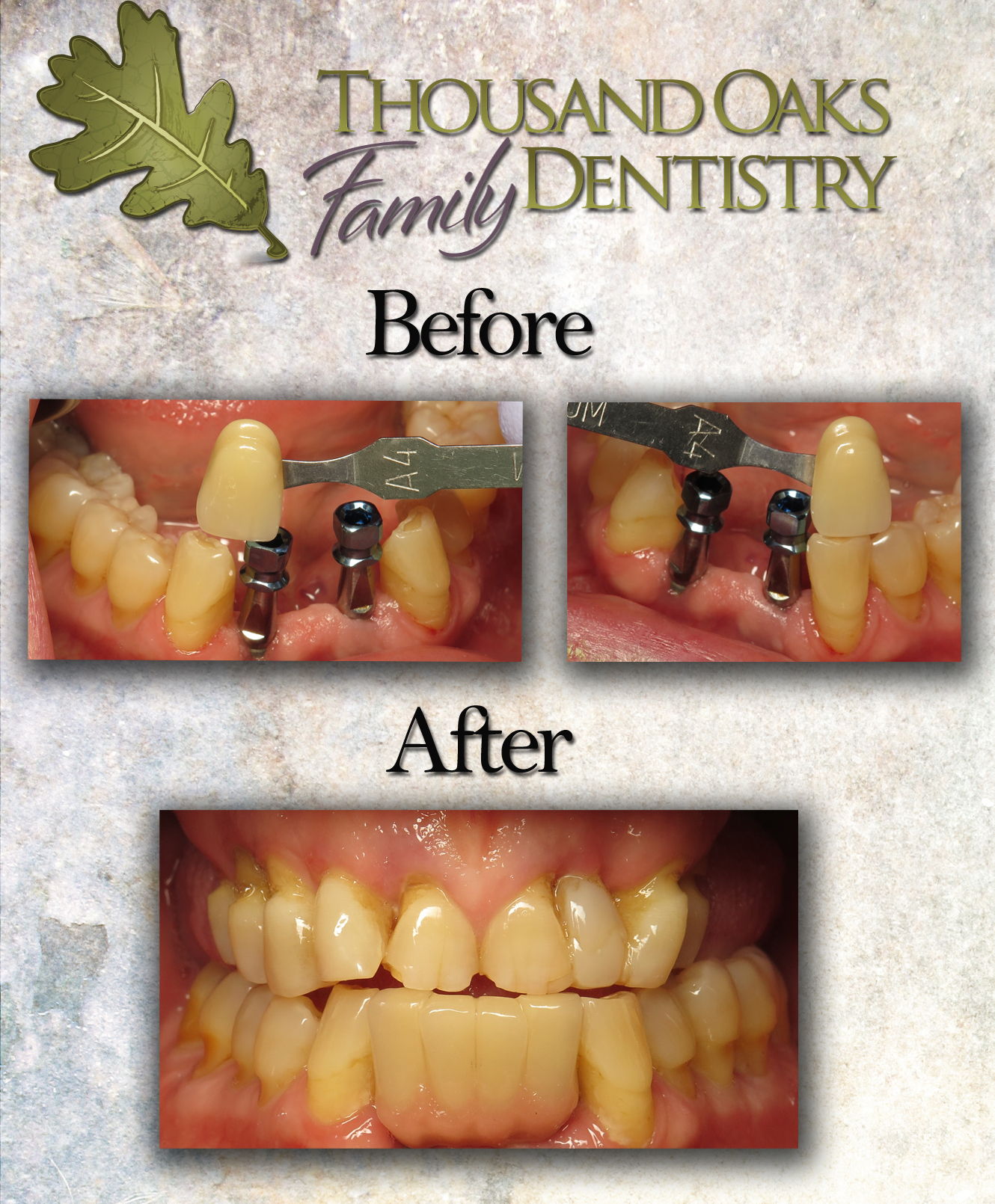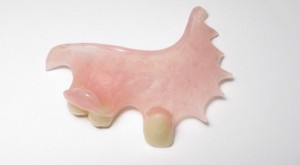Lost teeth can be replaced by a number of different dental treatments, including implants, removable dentures, and bridges. Implants are the most technologically advanced treatment option and act the most like natural teeth. Dental implants are bio-compatible titanium alloy cylinders that act as a root replacement for a missing tooth. In their current form, dental implants have been around since the late 1970s when a Swedish orthopedist named Dr. Branemark developed them for dentistry.
Today dental implants are the preferred course of treatment for replacing a single missing tooth. They are similar in cost to doing a bridge and far more comfortable than wearing a removable appliance such as a partial denture. In addition, unlike a bridge, dental implants do not require disturbing the tooth structure of surrounding teeth.
According to the Academy of Osseointegration website, the long term success rate of implants remaining stabile in the bone is 90%. A study published in Clinical Oral Implants Research (July 2010) showed a 16 year survival rate of 83%. In either case, implants have an amazing long term success rate, that makes them a predictable option to replace a missing tooth.
Implants have become a billion dollar industry. Two of the leading implant manufacturers, Nobel Biocare and Straumann each reported yearly revenue in 2013 and 2012 respectively of over 780 million US dollars. In my office I have been placing dental implants since 2007. I have chosen to place Straumann implants, because they are an industry leading company that has been developing implants in Switzerland since 1974. They produce a high quality and consistent product, including the implant and all of the parts that connect to the implant that allow us to restore the implant with a prosthetic tooth.
As a general dentist, I enjoy placing implants in my office because I know where the ideal placement is so that I can restore the implant with an ideally fitting and functioning crown. The actual surgery of placing the implant isn’t much different than drilling an ideal hole in a tooth to fix a cavity. Implants are placed by surgically making a small incision in the tissue, followed by drilling a hole similar in size to the implant, and then using a torque wrench to screw the implant in place. The entire procedure is done with local anesthesia in under an hour. Patients have told me that having an implant placed is less traumatic than having a tooth removed, and the recovery isn’t much different than having a filling placed.
After a tooth is lost, it is ideal to wait four months for the bone to heal before placing the implant. It takes an additional four months once an implant is placed for it to osseointegrate in the bone and for the permanent crown to be placed. So from the initial tooth loss it takes eight months for the procedure to be completed.
In restoring the implant, there are a couple of steps. We take an impression of the location of the implant. Then my lab fabricates a custom abutment, which replicates the missing part of the tooth that sticks above the gum tissue. These abutments are made of either a high noble metal, titanium or zirconia and they are screwed onto the implant. Finally a traditional crown is made to attach to the abutment.
Patients frequently ask about the cost and timeline for dental implants. To restore a single missing tooth with a dental implant, abutment, and crown, the cost is approximately $3500. Implants are most predictable in their long term success when they are given the proper amount of time for the bone to integrate and heal to the implant. When advertisements are made for implants that cost less or take less time, it generally involves using less quality implants and connecting parts. I believe in using industry leading parts, custom abutments, and quality local labs to complete all of my implant cases.


























